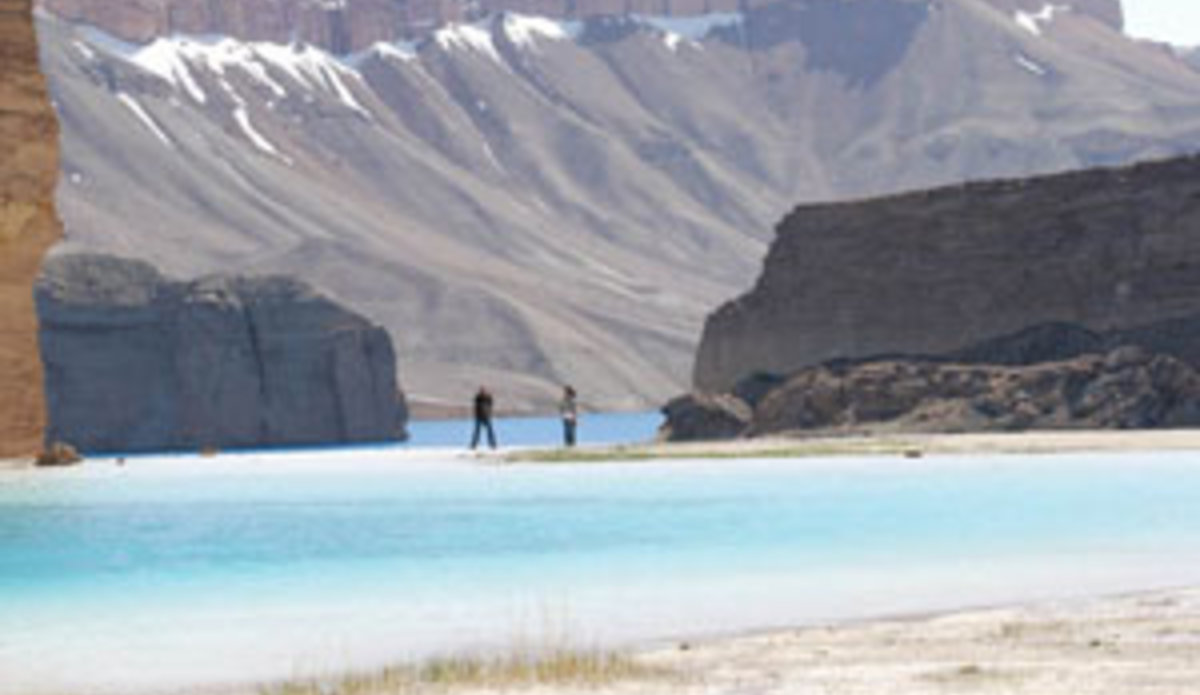Bamyan: The land with a rich cultural heritage
15 March 2010 - Afghanistan’s central province of Bamyan possess some of the world’s most renowned archaeological sites from the fifth century, which are most often referred to in seminal studies on the history and archaeology of central Asia.
The strategic location of Bamyan valley on the old Silk Route connecting India and China with the west gives significance to the area for studies on the expansion of Buddhism.
Although Bamyan is well-known for the two giant standing Buddha statues carved into the valley’s cliff face, which were destroyed by the Taliban in March 2001, there are 16 other historical areas that contribute to the area’s history.
Many of them are as old as the two statues and eight of these sites are registered as UNESCO World Heritage sites.
The cultural landscape and archaeological remains of Bamyan valley were listed on the UNESCO World Heritage list in 2003.
Since then international archaeologists and researchers have started studies and work on the restoration and preservation of the remaining monuments.
During these studies, many new discoveries have been made in Bamyan, including one of the world’s top archaeological discoveries in 2008.
From the surrounding caves of the Bamyan Buddhas, where monks once lived and prayed, scientists discovered murals which were painted in the seventh century that have now been tested to be the world’s first oil paintings.
"There was no clear material evidence of drying oils being used in paintings before the 12th century anywhere in the world, until now," Yoko Taniguchi, a Japanese conservation scientist at Japan's National Research Institute for Cultural Properties told the news agency AFP.
Dr Taniguchi was very impressed to discover that such advanced methods were used in mural paintings in central Asia.
"My European colleagues were shocked because they always believed oil paintings were invented in Europe. They couldn't believe such techniques could exist in some Buddhist cave deep in the countryside. This is one of the most important art-historical and archaeological discoveries ever made," she added.
In October 2008, a German team of archaeologists made another important discovery.
They discovered an intact and sealed small bag on the eastern side of the Buddha statues, which is believed to be a gift from India to celebrate the creation of Buddha.
“This discovery will help to unveil the mystery surrounding the creation of statues,” said Erwin Emmerling, a professor at the Technical University of Munich.
In the seventh century AD a Chinese pilgrim Xuan Zang, is said to have visited Bamyan.
He wrote about two great standing statues guarding the valley and in the same account he mentioned that in the east of the city there was a big Buddha in a sleeping position, as big as 300 metres.
The Chinese text attracted a French archaeological team led by France based Afghan archaeologist Dr Zemaryalai Tarzi, who a few years ago, started excavations at the location to find the lost Buddha.
The team could not find the big Buddha, but instead they uncovered parts of another reclining figure which is about 19 metres long.
Local authorities in Bamyan say that this discovery gives many hints that the big Buddha does exist.
"The recent discoveries by Dr Tarzi’s team gave us many new clues and there is great hope that they will find the big Buddha," said Najibullah Ahrar, head of Bamyan's information and culture department.
If the so called lost Buddha is found, one thing is certain that this will be a revolutionary discovery in the history of Afghanistan, which could be followed by a big flow of tourists that will boost the economy of the province.
According to UNESCO the Bamyan World Heritage Site is not safe and is listed on the ‘endangered’ list due to natural and human factors that place it at particular risk.
United Nations agencies are working closely with Afghanistan’s government to mitigate these risks and ensure long term conservation.
The Mine Action Coordination Centre for Afghanistan (MACCA) recently announced Bamyan’s World Heritage sites free of land-mines after two years of extensive demining work.
UN-contracted archaeologists have been working for years to conserve the remains of the two colossal statues and other historical sites.
But a lot more work, which may take years, needs to be done for the restoration and sustainable preservation of these sites.
By Jaffar Rahim, UNAMA
This article is a part of a three-week long series being published daily to mark UNAMA's Afghan Update Cultural Heritage issue that recognises Afghanistan's rich past and the need to preserve it for future generations.
 UN
UN







